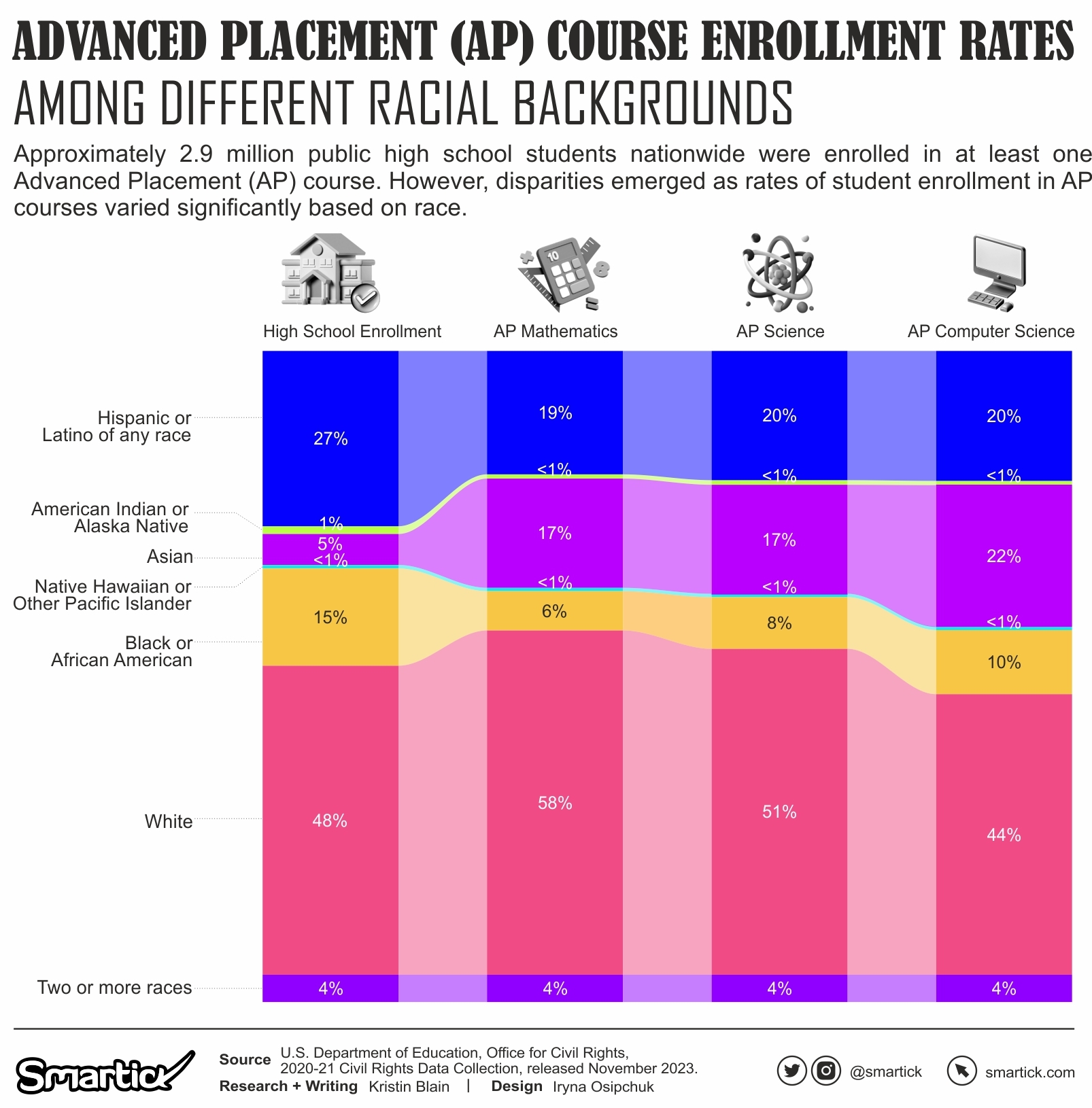
In the ever-evolving landscape of education, Advanced Placement (AP) courses have become a benchmark for academic rigor in high schools across the United States. These courses not only challenge students but also offer an opportunity to earn college credit. However, a recent analysis of U.S. Department of Education data has unveiled significant racial disparities in the enrollment rates of public high school students in AP courses.

Overview of Enrollment Disparities
Approximately 2.9 million public high school students nationwide are enrolled in at least one AP course, according to the U.S. Department of Education. While this represents a commendable effort towards promoting advanced education, a deeper examination reveals substantial variations in enrollment rates based on the racial backgrounds of students.
Black Students
Despite constituting 15% of total high school student enrollment, Black students find themselves underrepresented in key AP courses. They account for only 10% of students enrolled in AP computer science, 8% in AP science, and a mere 6% in AP mathematics. This suggests a need for targeted interventions to address barriers preventing Black students from accessing these crucial courses.
Latino Students
Latino students, representing 27% of total high school student enrollment, face a similar trend. While they make up 20% of students enrolled in AP science and AP computer science, and 19% in AP mathematics, there remains room for improvement in bridging the gap between enrollment in AP courses and the overall student population.
American Indian or Alaska Native Students
With only 1% of total high school student enrollment, American Indian or Alaska Native students find themselves largely excluded from AP mathematics, AP science, and AP computer science courses. These stark disparities raise questions about equitable access to advanced educational opportunities for this demographic.
White Students
Conversely, white students, representing 48% of total high school enrollment, seem to be overrepresented in certain AP courses. They account for 51% of students enrolled in AP science and 53% in AP mathematics, while comprising 44% of students in AP computer science. Addressing these imbalances is crucial for ensuring a level playing field in AP course enrollment.
Asian Students
Asian students, constituting 5% of total high school student enrollment, emerge as a standout group in AP enrollment. They represent 17% of students in AP science and AP mathematics, and a remarkable 22% in AP computer science. While their higher representation is noteworthy, it’s essential to continue fostering an inclusive environment that promotes diversity within these courses.
The U.S. Department of Education data analysis sheds light on the disparities in AP course enrollment across different racial groups. Acknowledging and addressing these imbalances is imperative for fostering an inclusive educational environment that provides equal opportunities for all students. As educators, policymakers, and communities work together, they can create targeted initiatives to break down barriers and ensure that every student, regardless of their racial background, has the opportunity to access and excel in advanced courses.

